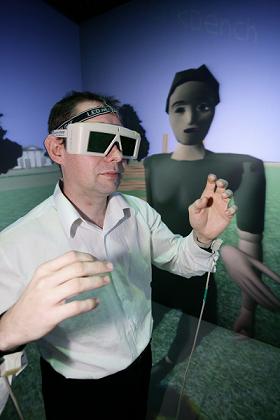Key Note 1
   | Speaker: Prof. Raj Jain (Department of Computer Science and Engineering, Washington University in Saint Louis)Title: Internet 3.0: The Next Generation Internet |
Abstract:
Multimedia over Internet has been growing rapidly. However, several design choices that were made 40 years ago are proving to be limiting. For example, the host centric design of the current Internet does not recognize data and end-users as integral entities of the system. The first generation of Internet has been very successful and yet business, organizations, governments are finding it difficult to enforce their policies on their networks with the same ease that they do other methods of communications and transport. Ad-Hoc solutions e.g. firewalls, NAT, middleboxes etc, that try to mitigate these issues end up providing localized myopic fixes which often hurt the basic underlying principles of the original design. We envision the future internet to be a dynamic, heterogeneous, secure, energy efficient ubiquitous network flexible enough to support innovations and policy enforcements both at the edge and the core. This talk is a discussion of the how we would redesign the Internet given the knowledge we have gained in the last 40 years. | |
Key Note 2
 | Speaker: Prof. David Roberts (Univesity of Salford, UK)Title: Face to Face: communicating appearance, attention and activity across a distance |
Abstract:Communication technology brings people together across a distance but is presently little substitute for being together. This keynote looks at the balance of communicating appearance, attention and activity through technology, within a framework of social and technical factors. Presently it is hard to communicate together in one medium: what someone looks like, where they are looking and what they are working with. The balance between believability and faithfulness across attention, appearance and activity impacts on the applications in which a technology can be used. Video conferencing faithfully depicts what people look like, but can only communicate eye-gaze by constraining people to seats and does not allow the manipulation of shared artefacts. In contrast, immersive collaborative virtual environments allow people to share the same virtual space through avatar embodiments representing where someone is standing, moving and looking, and allowing intuitive gesturing and shared manipulation of virtual objects, but hiding identity and appearance. Tele-immersion has the potential to combine the best of video and virtual mediums by placing vision based reconstructions of people in a shared virtual context, however, much work is needed before this becomes a generally usable technology. The issue of balance is further complicated when the technology needs to pervade everyday life. While immersive technologies support rich collaboration, pervasive, mobile and embedded technologies do not yet possess many of the important characteristics. Underlying issues of bandwidth and consistency control must be addressed to support multi-modality across the many and various medium streams. The findings of a decade of investigation into these issues by the speaker and his colleagues are summarised in this talk. | |